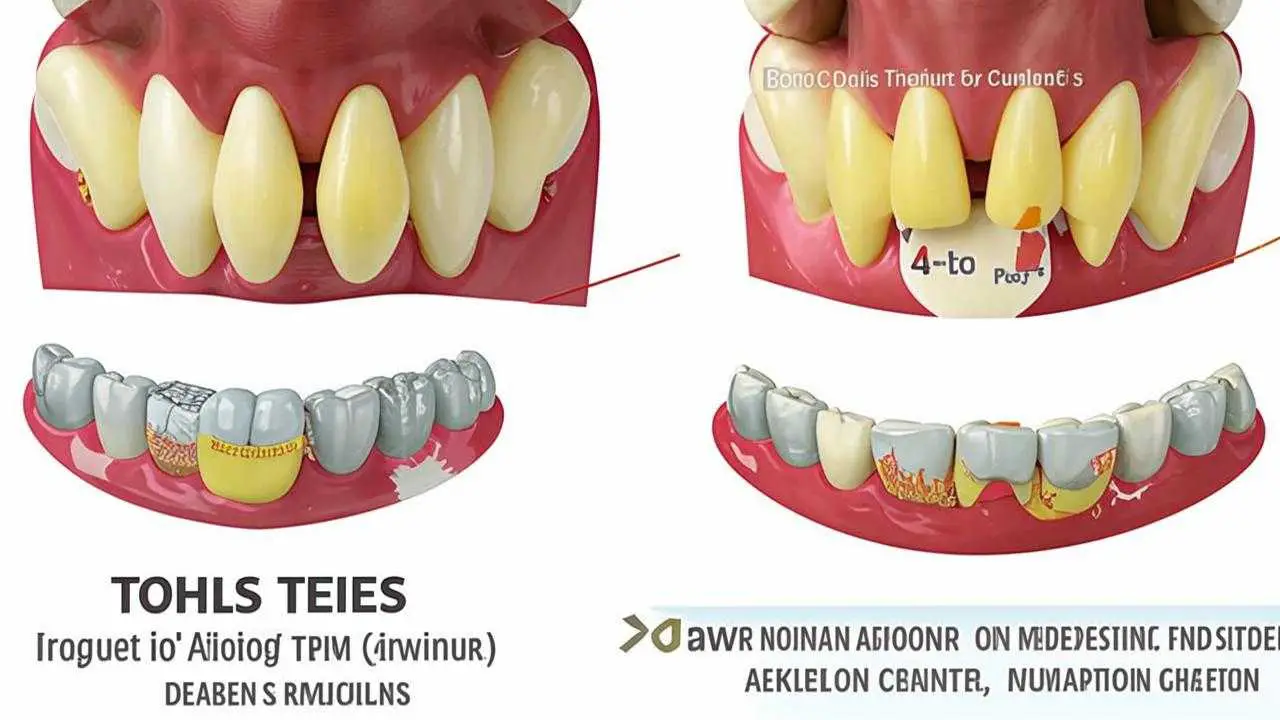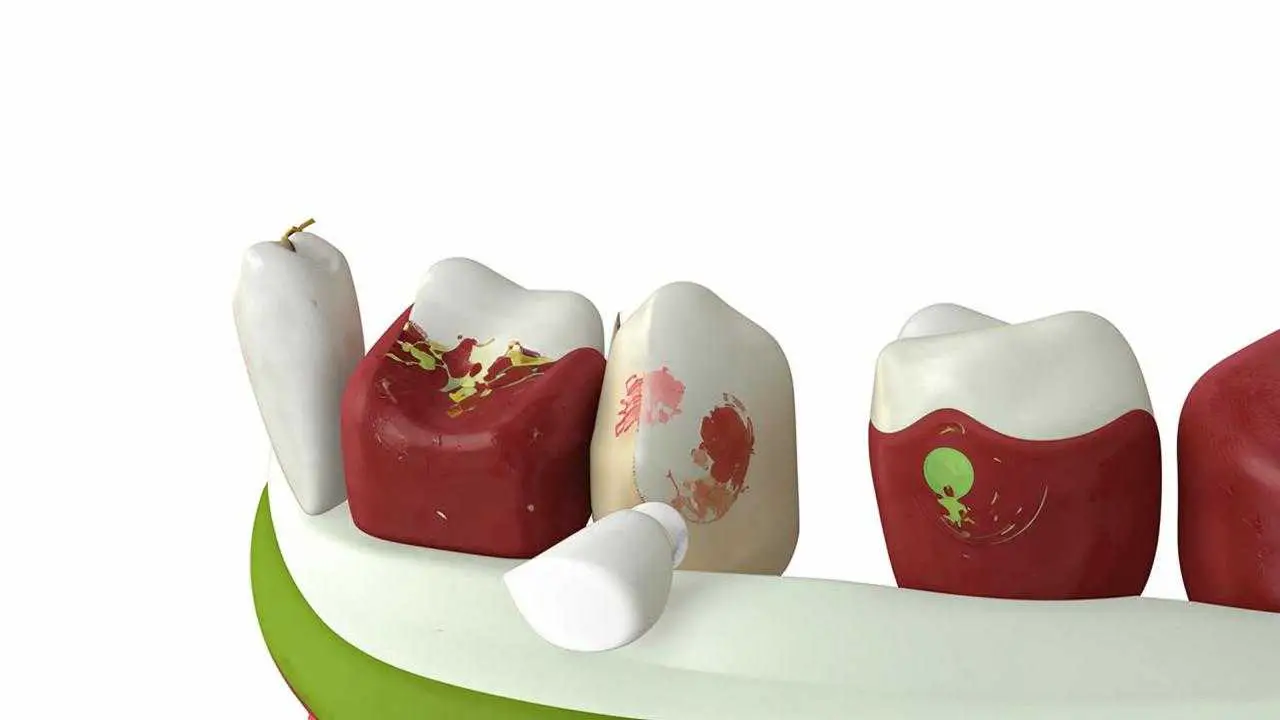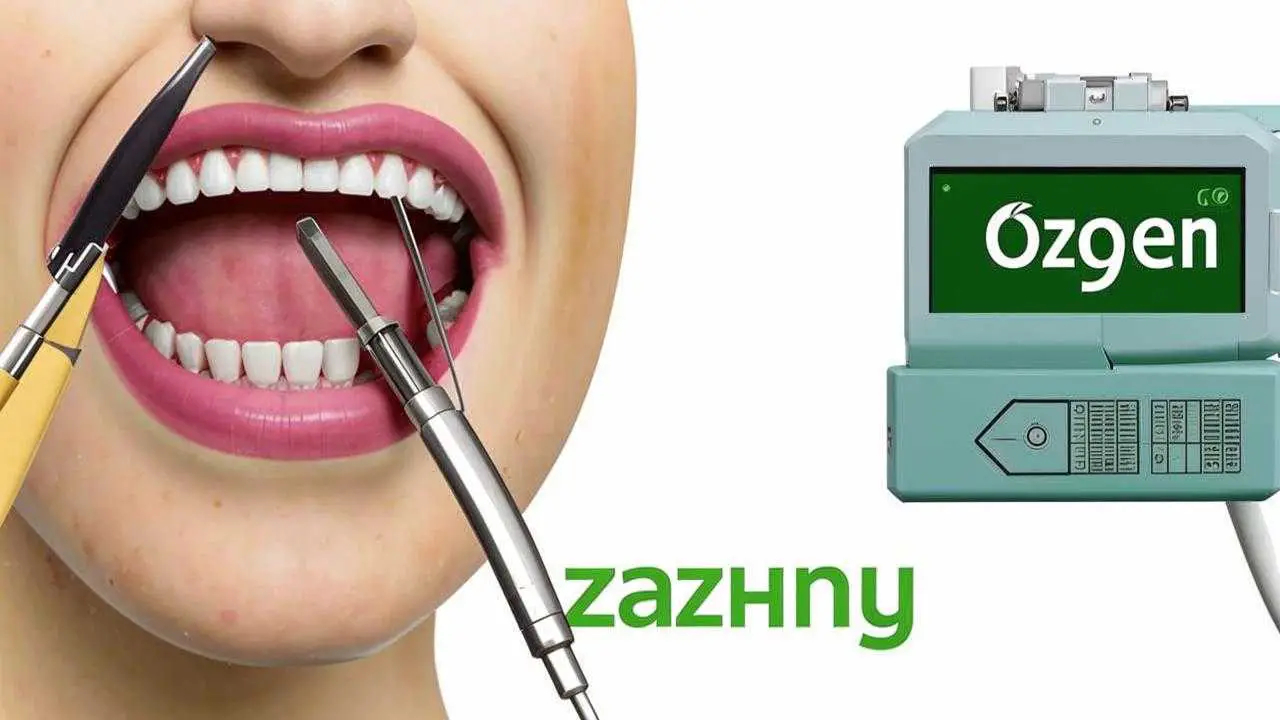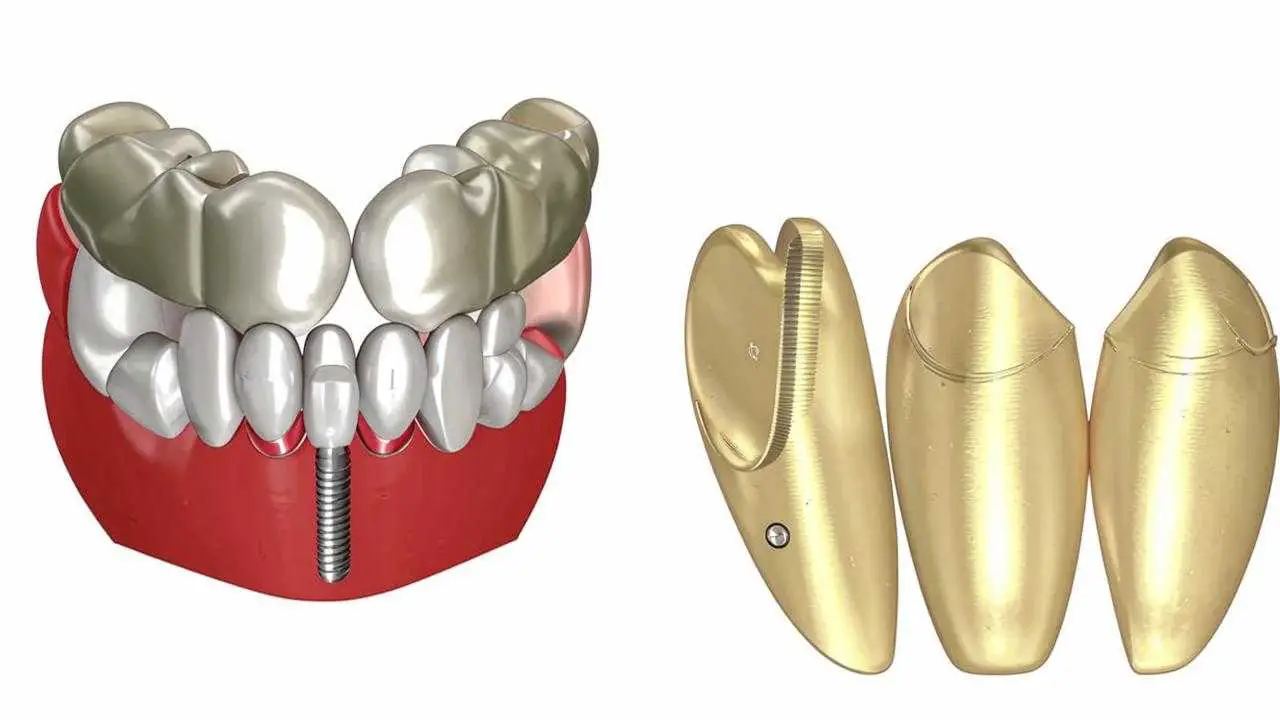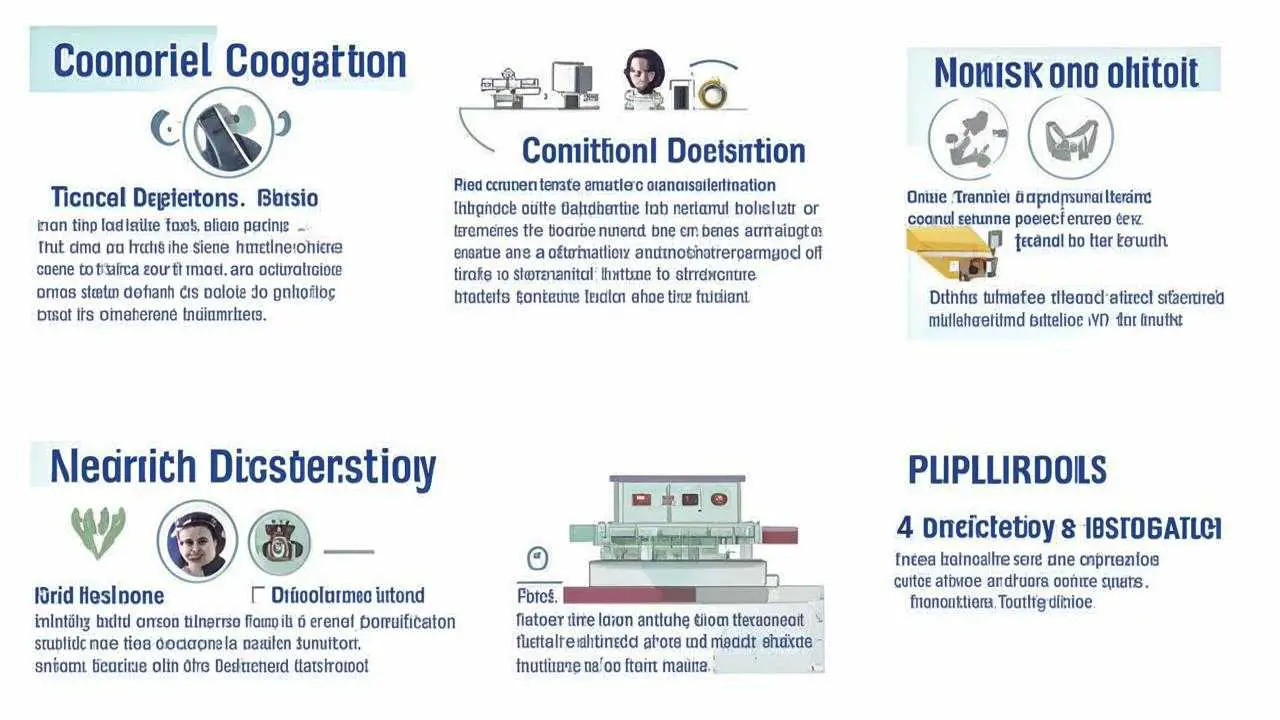Statistics show that 98 percent of people are afraid of going to the dentist. As a result, dental problems are put off until one day we find out that a tooth has rotted away. Then a visit to the doctor is inevitable, but there is a lot of work to be done.
Contrary to popular belief, rotten teeth are not just the result of poor hygiene.
Causes of tooth rot
Yes, we all know that teeth should be brushed 2 times a day, flossed and visited the dentist 2 times a year. Many patients follow these recommendations and their teeth still deteriorate and rot. Poor hygiene is not the only reason why teeth deteriorate. There are other factors:
- Gum disease triggers bacteria to multiply, which literally chews through enamel and destroys tooth tissue;
- genetics plays a role in the ability of teeth to resist pathogenic factors;
- unfavorable environmental conditions lead to more dental problems in industrial areas than in places without factories and mills;
- water quality directly affects teeth. Low content of useful minerals (fluoride, calcium), high content of heavy metal salts can destroy teeth despite hygiene;
- bad habits. Smokers have worse teeth than non-smokers and treatment is harder;
- general healthconditions, such as GI problems, adversely affect dental health;
- carbohydrates in the diet and hard foods that traumatize the gums and enamel lead to tooth decay.
To understand why teeth rot, you need to get an examination. Do not be surprised if the doctor asks to take tests or make an ultrasound. Dental treatment requires a comprehensive approach and diagnosis is more important than ever. After finding out why teeth rot, the doctor will prescribe adequate treatment.
Symptoms
Tooth pain does not appear immediately, so the doctor is consulted when the tooth is already severely damaged. To take action in time, it is better to go to the dentist at the first signs of a problem.
Make an appointment if you experience:
- discomfort when brushing;
- reacting to cold-hot, sweet-sour;
- have rotten breath;
- notice stains on the enamel;
- painful sensations.
Stages
Caries, like a secret agent, begins to act stealthily and may not make itself known for years. Its initial stage is called the “white spot stage”. How can you see white on white? That’s why it is important to visit the dentist regularly – the specialist will distinguish the white spot on the enamel background and treat caries in time. And if it is neglected, the disease moves to the next level:
- Superficial. The enamel is still intact, but in the area of the stain becomes rough. The stain deepens. The tooth begins to react to cold-hot.
- Medium. Caries penetrates to the dentin, but it does not give an exit to the pulp. Spoiled tooth reacts to temperature, mechanical, chemical stimuli. But the pain is not constant, passes quickly.
- Deep. Pain is sharp when touching, but gradually subsides. Carious cavity is visible to the naked eye.
What are the dangers of untreated teeth
If caries is not treated in time, the inflammation penetrates into the pulp and pulpitis begins. Which, in turn, leads to periodontitis. Treatment of these complications takes a long time and is not always effective. The success in treating rotten teeth is higher the earlier it begins. In addition, infection from the oral cavity easily penetrates into the body, increasing the risk of inflammatory diseases of various etiologies, stomach problems.
Risk groups
No one is immune from rotten teeth, but there are people who suffer from them more than others. Strange as it may seem, but one of these groups includes children. 70% of children under the age of 10 have decayed teeth, and by the age of 16, the numbers reach 80%.
Why teeth rot in children
In children, the composition of saliva is not the same as in adults. Its antibacterial properties are low, in a warm, moist environment, germs multiply rapidly. The disease is not only frequent, it progresses rapidly. Caries spreads in width and depth. Single occurrences are rare, usually several teeth are affected at once. For children, timely detection and treatment of problem teeth is of particular importance. Rotten teeth can cause:
- pulpitis and periodontitis;
- bite abnormalities;
- loss of primary and permanent teeth;
- inflammation of the maxillofacial apparatus.
Bad teeth affect the social adaptation of children, lead to psychological problems.
Preventive measures include hygienic procedures, restrictions on sweets, a balanced diet and regular checkups with the dentist.
Teeth and pregnancy
We found out why teeth rot in children. There is another group of people particularly at risk of tooth rot. These are pregnant women. Some scientists classify pregnancy as an immunodeficiency state – so much so that the body’s resistance to pathogens drops. It is not surprising that during pregnancy, general illnesses worsen and dental problems begin. The increased content of hormones in the body reduces the barrier capacity of the epithelium, microorganisms more easily penetrate the gum and begin to multiply.
To save teeth will help:
- rational and balanced diet;
- multivitamin complexes;
- professional oral hygiene;
- herbal baths;
- applications with calcium and phosphates.
What to do if the tooth has rotted
Not so long ago, the only solution to the problem was extraction. Today, dental science offers different methods and techniques for restoring teeth.
The method of action depends on the specific case. It matters the depth of the lesion, its area, the stage of the disease and the degree of destruction.
Treatment at the initial stage
At the stain stage, you can do without a drill, because it is the one that scares the most and makes you procrastinate with a visit to the doctor.
Apply:
- Ozone therapy. Ozone treatment destroys bacteria, and special preparations restore enamel.
- Laser also destroys bacteria, while not heating the tissues and serves as a good prevention for gum disease.
- Infiltration treatment.
The chemical composition destroys bacteria, and the infiltration material “seals” the pores of the enamel, does not allow pathogens to penetrate.
Treatment at a medium and severe stage
If the disease is neglected, the dentist will still try to save the tooth. In this case, without a drill can no longer do without it. After examination, the doctor decides how to treat the rotted tooth. But the general principles are the same: after the introduction of anesthesia, all dead tissue is removed, the cavity is disinfected and a filling is placed.
If the crown of the tooth has rotted, but the root is preserved, after treatment, the tooth is prepared for prosthetics, using:
- Inlays under the stump. They replace the destroyed tooth tissue. Inlays are made of zirconium, ceramic, precious metals. One part of the inlay is inserted into the tooth canal and a crown is placed on the other part.
- Pins. A post is a rod that is inserted into the tooth canal and a crown is placed on top. They are made of metal or fiberglass.
Modern prosthetics is a huge variety of materials. Crowns are made of traditional materials: metals and metal-ceramics, composites, zirconium alloys, modern metal-free compositions.
Implantation – a solution for neglected cases
Alas, if the root of the tooth has rotted away, the only solution is extraction. But even here, dentists offer a method that will help restore a rotted tooth – implantation. The implant will stop bone loss, prevent loosening and tilting of neighboring teeth, and restore your smile. The immediate loading method involves placing the implant immediately after tooth extraction. There is no need to wait for the hole to heal and you can chew almost immediately.
The wisdom tooth is a special case
Third molars cause a lot of trouble: they erupt late, often not all the way through. Under the edge of the gum accumulates food, bacteria multiply. It is difficult to get to them, so when the wisdom tooth has rotted away, in most cases it is removed. However, a competent specialist always considers the situation as a whole and makes a decision, taking into account all factors.
Prevention
Daily dental hygiene is of utmost importance in preventing tooth decay. But just brushing your teeth is not enough. In 90% of cases, the reason why teeth start to rot is the accumulation of food in the interdental space. The brush is not able to clean it well. Dentists never tire of repeating how important it is to floss. Daily use of floss reduces the risk of tooth decay by half.
Doctors also recommend:
- Professional brushing on a regular basis. The absence of plaque limits the habitat for germs.
- Fluoridation. Fluoride ions interact with tooth tissue and strengthen tooth enamel.
- Remineralization. Strong enamel provides an insurmountable barrier to bacteria. Enamel saturation with minerals is an excellent prevention of tooth decay.
- Sealing. Coating fissures, grooves on the enamel, with a special sealant prevents the accumulation of food, stops the development of microbial colonies.
Eliminating the causes of tooth decay, preventive enamel strengthening, and healthy habits will help you keep your smile for a long time.
